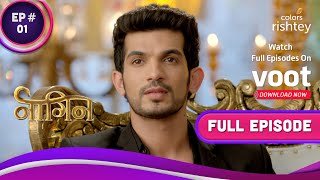Introduction
Naagin—a long-running, genre-defining supernatural thriller—has carved a unique niche in Indian television. At its core, the series weaves together mythic folklore, revenge, shifting allegiances, and forbidden romance. It’s more than just a tale of shape-shifting serpents; it’s a sprawling epic of power, duty, love, and the age-old battle between mortal ambition and divine destiny.
This analysis dives deep into the narrative anatomy of Naagin, tracing its folklore roots, structural DNA, archetypal characters, thematic pillars, and cultural resonance. We’ll unpack what makes Naagin a cultural phenomenon—not just for its twists, special effects, and drama, but for tapping into something ancient, primal, and emotionally compelling.
1. Origins & Mythological Roots
The serpent goddess, or Ichchadhari Naagin, comes from a rich tapestry of South Asian mythology—where shape-shifters guard sacred treasures, enact karmic retribution, and embody the duality of creation/destruction. Naagin draws on this lore, blending ecological justice, serpentine divinity, and cosmic revenge into a television narrative. This mythic backbone gives the show a ritualistic strength that supports its episodic chaos.
2. Season-by-Season Narrative Architecture
The series unfolds as discrete but thematically linked seasons. Each arc centers on a different Naagin—women who exist on the border between human and divine—driven by love, betrayal, or cosmic wrath. Though cast and relationships shift, the narrative formula remains:
- A Naagin enters human society under a new identity.
- She forms alliances and relationships—romantic, maternal, or strategic.
- A betrayal or tragedy triggers her transformation.
- Her vengeance is enacted through a complex series of murders, shapeshifting confrontations, and supernatural confrontations.
- Threads of love, sacrifice, and revelation complicate her mission.
This structure provides a robust template, while allowing the show to reinvent characters, settings, and moral stakes each season.
3. Core Characters & Dynamics
The Naagin (Protagonist)
Each season’s Naagin (e.g., Shivanya, Shivangi, Brinda, Pratha) embodies the clash between human impulse and divine purpose. She’s a protector of secret knowledge and avenger of injustice. These characters resemble mythic heroines—devoted, righteous, and lethal. Their journeys often follow a three-act path:
- Innocence & adaptation: Learning the human world, forming impromptu bonds.
- Trauma & transformation: Triggered by loss or betrayal that reveals their serpent identity.
- Revenge & resolution: The serpentine quest ends when enemies are punished, justice restored—but often at great personal cost.
The Male Lead (Romantic Counterpoint)
Male counterparts (e.g., Rocky, Rishabh, Veer) often embody cynical masculinity at first—wealthy, powerful, emotionally reserved. Their arc is a transformation from skepticism to acceptance, love, and self-sacrifice. They are both romantic heroes and tragic figures—smitten by a woman whose power eclipses theirs.
Allies & Antagonists
The family and friends the Naagin collects often serve dual roles: unconditional support and collateral damage. Villains range from human opportunists to rival shape-shifters, adding layers of betrayal, shifting loyalties, and moral grease to the narrative wheels.
4. Thematic Pillars
Revenge as Justice
At its thematic core, Naagin depicts vengeance as a sacred duty—not personal vendetta, but cosmic balance. These supernatural beings are made to act when the human world fails to deliver justice. Blood debts, murders, broken pacts all cry out. Each killing is ritual—a restoration of divine law.
Love as Redemption & Vulnerability
Romance isn’t fluffy in Naagin. It humanizes legendary beings; makes them vulnerable. It raises the stakes for their vengeance. Love becomes both their power and, often, their Achilles’ heel. Their enchantment with human relationships blurs the line between identity and desire.
Power & Loyalty within Legacy
The question of lineage—who is related to whom, who’s a vessel for serpent souls, who carries hidden serpent blood—drives much of the plot. Bloodlines carry obligations, curses, and protective duties. Inheritance—of memory, rituals, powers—is earned, revealed, shared. Loyalty isn’t chosen; it’s coded into their DNA.
Shapeshifting & Identity
The physical ability to become snake or human is symbolic. It externalizes the internal conflict between higher purpose and mortal wants. Characters must choose when to transform—often at their lowest emotional moment—revealing that identity is fluid, not fixed.
5. Cultural & Genre Significance
Breaking the Soap Mold
By adding mythic stakes, sci-fi effects, and supernatural foes, Naagin redefined daily soaps. It created a genre—mythic thriller—where episodes could build long narrative arcs while delivering mid-season twists and special-effects spectacles. It insisted that myth could live in modern backyards.
Visual Spectacle, Ritual Performance
The show became as much a ritual as a narrative. Costume design, chanting, sigils, temple sets, special-effects transformations—it created a visual language that felt holy, dramatic, and ritualistic. Viewers gravitate toward these sensory rituals because they offer catharsis and spectacle within the familiar comfort of daily television.
6. Strengths & Narrative Tensions
Emotional Engagement
Viewers develop deep emotional bonds with supernatural heroines who suffer heartbreak, loss, and betrayal. Their pain becomes the audience’s pain; their victories—personal and moral—become communal.
Repetitive Structure Risks
With its formulaic arcs, Naagin runs the risk of predictability. Reincarnations, lost memories, evil doppelgängers—they start feeling like boxes to check. The show walks a tightrope between delivering dependable mythic satisfaction and risking narrative fatigue.
Myth vs. Modern Logic
Suspension of disbelief is key. But as the show escalates—mythic cities, demonic serpents, cosmic beings—questions arise. Where does the human world end and divine begin? These blurred lines can both enrich and destabilize the narrative.
7. Emotional & Symbolic Climax
The heart of Naagin lies in sacrificial resolutions—heroic deaths, rupture of memory spells, final transformations that undo curses at monumental cost. Many iterations end in blood rituals, half-human/half-divine revelations, or the Naagin returning to her serpentine world—leaving the human lover behind. It’s tragedy-rooted catharsis—a reminder that profound transformation often demands sacrifice.
8. Why Naagin Strikes a Chord
- Mythic Echoes: It reconnects audiences to folklore in a modern age.
- Ritualistic Television: Episode arcs, seasonal climaxes, and visual aesthetics mirror ritual structures.
- Empowered, Flawed Heroines: Naagins are powerful, vengeful, yet deeply human in their emotional journeys.
- Shifting Identity as Humanity: They show us identity is never fixed—it unfolds through challenge, love, and pain.
Conclusion
Naagin is a mythic tapestry—woven from threads of love, betrayal, divine vengeance, and eternal duty. It treads the space between salvation and destruction, between what we are destined to be and what we choose to become. Its success lies in transforming folklore into empathetic human drama, combining ritualistic spectacle with emotional stakes.
At its best, Naagin feels like a shared dream—one shaped by ancestral memory, performed nightly for millions craving both suspense and transcendence. Its serpentine coils may constrict, but they also hold a mirror to ancient truths about identity, devotion, and the unending quest for cosmic justice in a human world.

